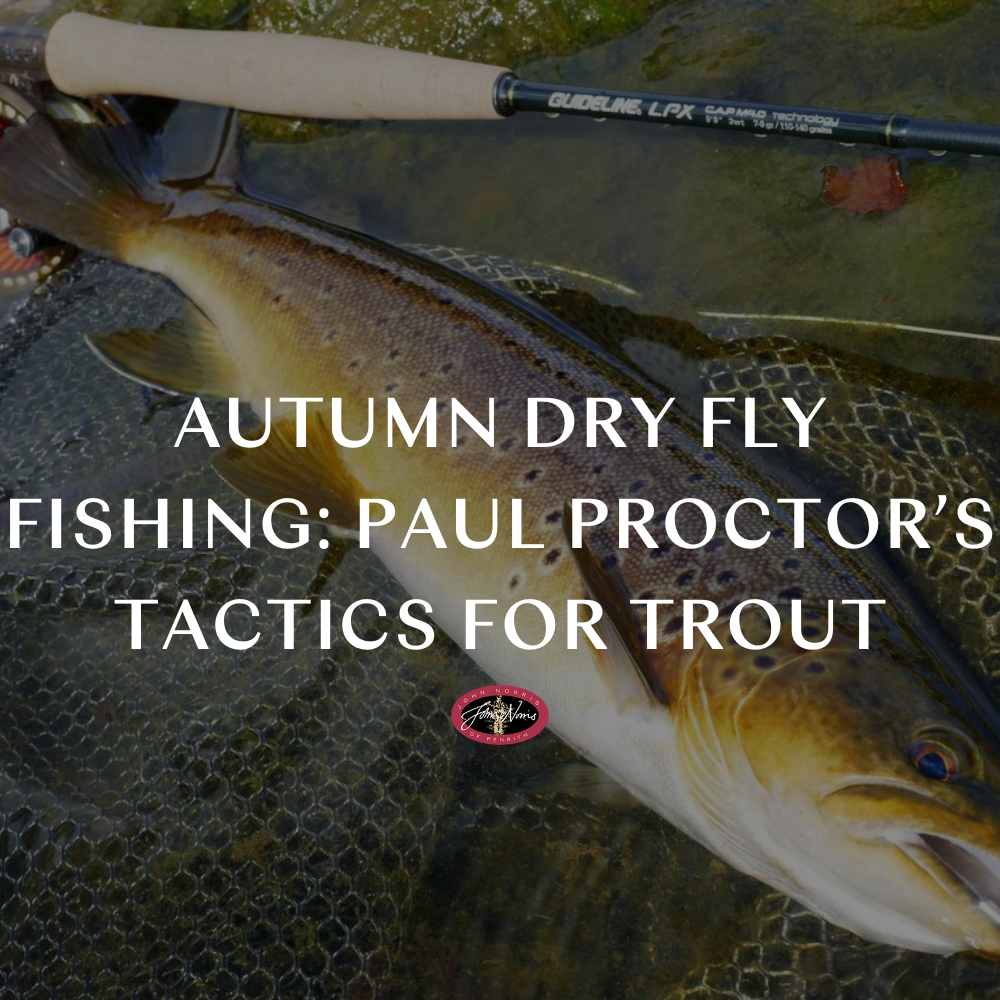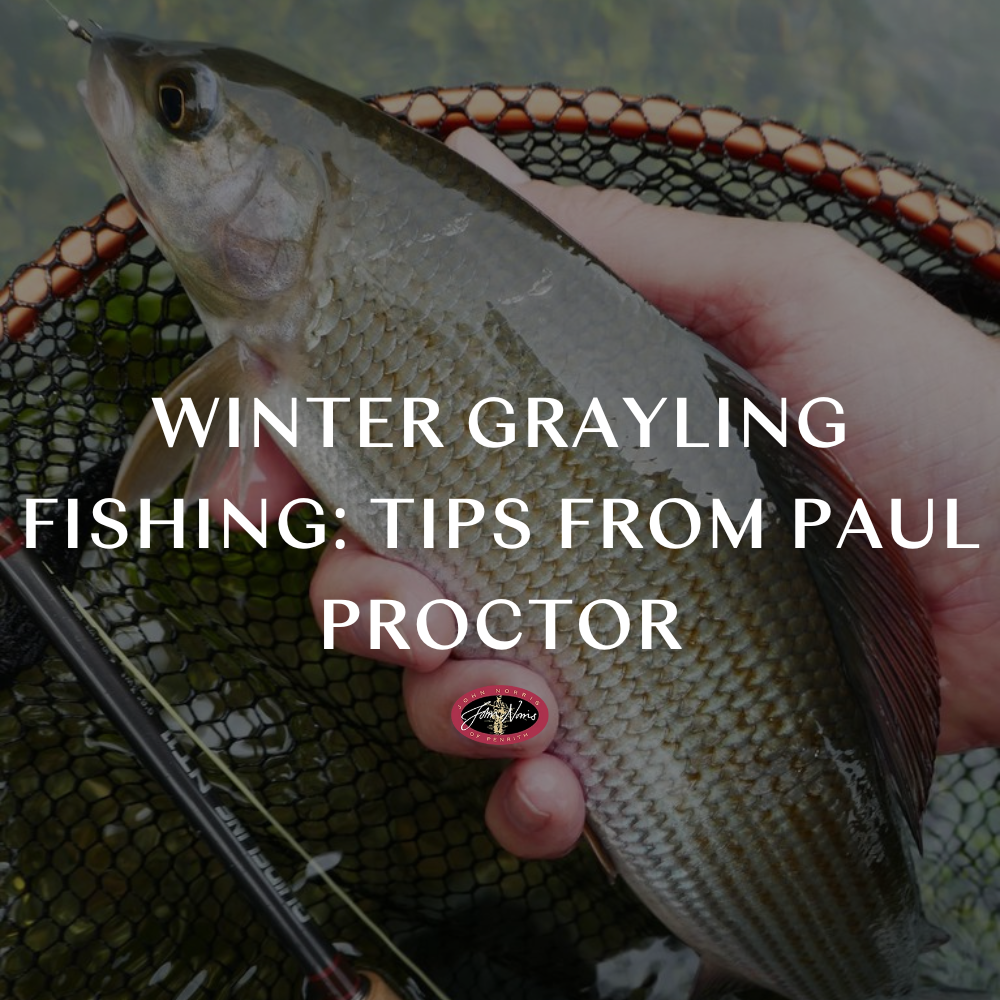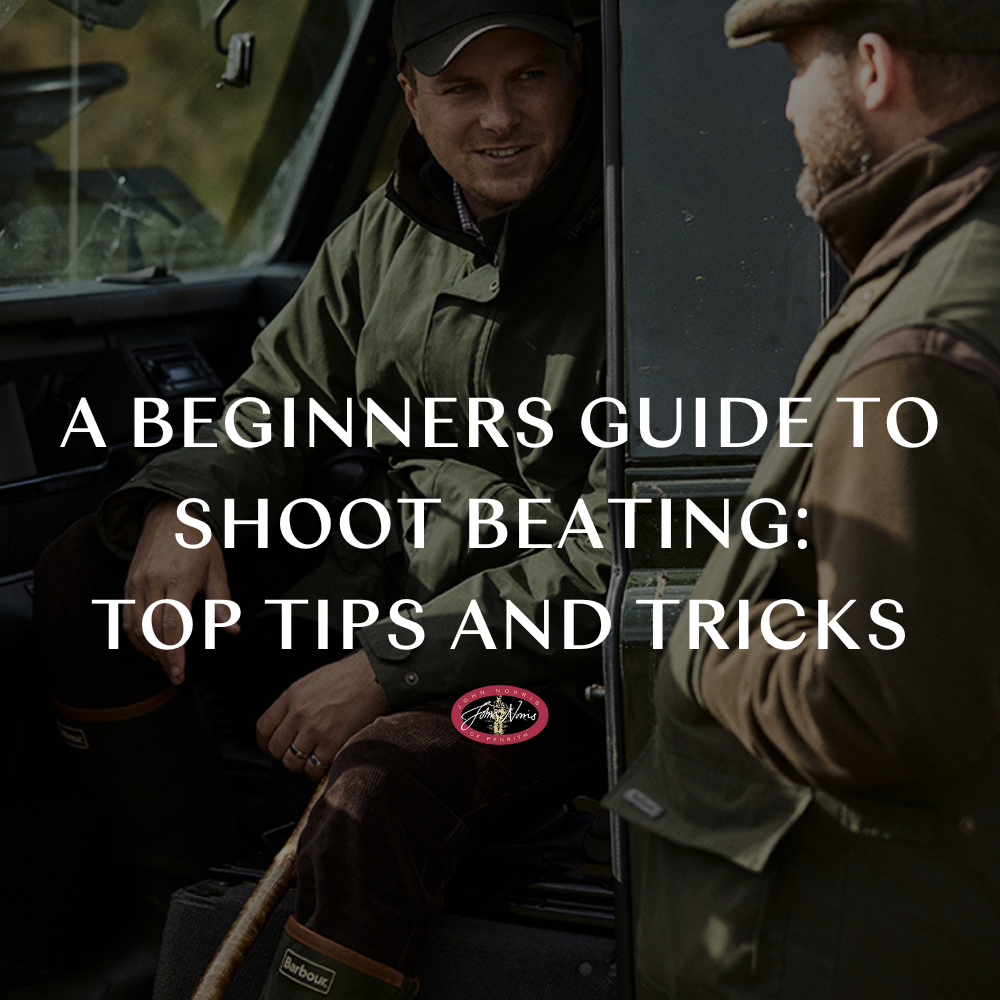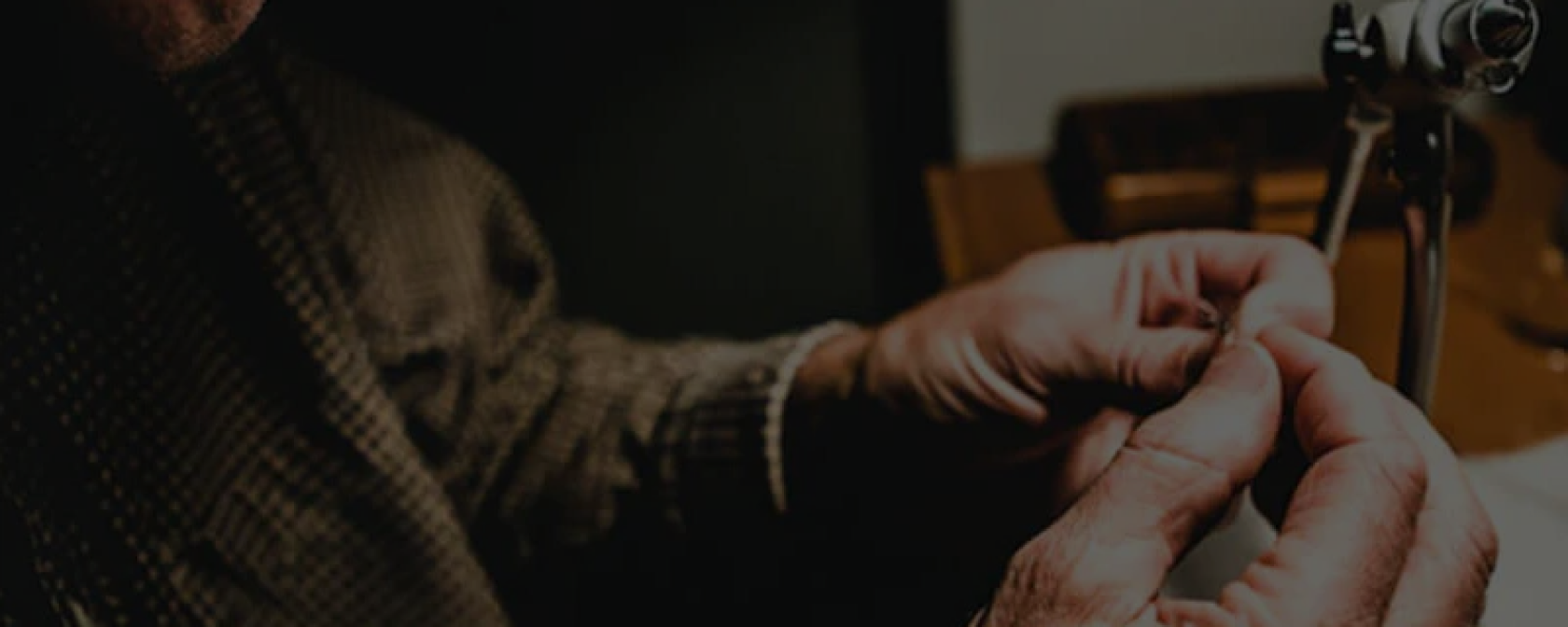Autumn Dry Fly Fishing: Paul Proctor’s Tactics for Trout

We all get a little whimsical about spring and how wonderful the fishing can be. Admittedly, early season fly hatches fuel much of our reminiscing, when fleck-winged March Browns and beloved Large Darks stir trout to rise with enthusiasm. That said, after six months of dark nights, the notion of tempting trout on dry flies feels novel once more! Now, we dash out whatever the weather, in the eternal hope of connecting with a biblical fly hatch.
Yet few ever really enthuse about the closing weeks. Instead, we resign ourselves to another season passing, with little to look forward to except the festive season and a helping of Christmas pudding! Admittedly, the idea of counting down the days until our tackle is retired once more is rarely fun. However, those final few weeks can produce memorable dry-fly sport and, having dined out all season, trout will be in tip-top condition: plump and pulling like freight trains!
Here, Paul Procter outlines flies, tackle and tactics that will put you on an even footing for September.
A Feast of September Fly Life
Perhaps most exciting is the sheer amount of fly life available to us, or more precisely, to the trout. September might well have an autumnal whiff about it, but the variety of trout fodder beggars belief. Large Dark Olives frequently decorate the water, with Pale Wateries and Autumn Duns joining their ranks. Scores of Willowflies and Needleflies flit across the surface too, while several species of caddisfly cling on, making the most of any weather resembling an Indian summer. Then there are hordes of terrestrials, such as beetles, flying ants, aphids, and craneflies, which end up as welcome snacks for trout. Perhaps the most dominant, though, are black gnats, which can carpet the surface in balmy weather.

With so much grub available, it’s little wonder that dimpling trout can be found on every bend or where currents fall slack.
Presentation: The Key to Success
Discovering feeding fish is only half the battle, kidding them into believing our feathery creations should be snapped up is where the challenge lies. Trout can become selective about what enters their jaws, especially once they develop a taste for a particular insect. With so much surface food drifting overhead, they can pick out impostors more readily. And after a season of being pestered, trout are that bit more flighty: a clumsy cast, heavy footfall, or clattering wading staff that might have gone unnoticed in April can now send them scurrying.

Softly-Softly Approach: Hide and Seek
A more subtle, softly-softly approach is often called for. Using compact binoculars can provide invaluable insight into trout feeding habits, allowing you to select an appropriate fly and determine the best way to present it.
Typical scenarios involve black gnats or rove beetles, which at times can be devilishly hard to spot. Many drift inertly on the water with only their upper parts breaching the surface. Initially, when these terrestrials drop on the water, trout go potty, but they soon learn that low-riding, swamped naturals can be inhaled with little effort. At times, fish become so besotted they disregard high-riding dry flies. Using a slack leader and flies such as an All Purpose Terrestrial, black Klinkhåmer, or slim Beetle ensures your imitation conforms naturally with the currents.

Tippet Selection: Strength and Subtlety
Tippet diameter has more to do with how a dry fly behaves than with trout somehow seeing it. Beginners often opt for ultra-fine tippet, which can lead to heartbreak when larger trout are encountered. A more pragmatic approach is to fish as heavy as conditions allow, balancing strength with the size of the fly and prevailing conditions.
For general use with size 14–16 flies, I favour tippets of around 0.15mm, such as the 5X Guideline Powerstrike. For smooth water or smaller imitations (size 18–22), a 0.13mm 6X Powerstrike works well, though caution is needed near snags. Occasionally, I step up to 0.18mm (3X) in turbulent pools or when flinging larger flies like daddy long legs into a brisk breeze.

Fly Selection and Autumn Presentation
Backend trout may be considered smarter, but lively flies often give an edge. Female caddis flutter and skip while egg-laying, signalling nearby trout. Motionless flies might go untouched, but those creating commotion have a higher chance of being snapped up. Casting a buoyant elk or deer hair caddis and maintaining a slightly raised rod tip helps protect against smash takes.

Blue-Winged Olives can still put on a good show in September. While there’s seldom a threat of trout choking on masses of duns, enough will exist to make a BWO imitation worthwhile. A few residual spinners will occur too, and some trout, and grayling, may single them out. Most fish, keen to stock up for winter, are not overly fussy.
Stealth and Approach
Even the best flies and tippets will fail if your approach is sloppy. Heavy footfall or a clattering wading staff can spook fish. Lightweight wading boots, such as the Guideline Laxa 3.0, aid stealth and dry quickly between catchments.
Rod Choice and Casting
Rod and line selection can influence success. My go-to rod is an AFTM No.4, but dropping to a 3-weight often improves results with backend trout. The Guideline LPX Tactical 9’9” 3-weight copes with breezes and lively fish while remaining delicate enough not to alarm trout in smooth pools. Limit false casts to three, including the final delivery, to avoid spooking fish.
Fly Rotation and Resting Fish
Showing a fish the same fly repeatedly can be counterproductive. My personal rule is a maximum of three good drifts over a fish with a dry fly. If there’s no response, I change the fly, rest the fish, or alter the delivery angle slightly. Small adjustments often make all the difference when trying to fool wary backend trout.
While many anglers wind down as the season closes, autumn offers some of the most satisfying dry-fly fishing. With careful fly selection, subtle presentation, and a patient, stealthy approach, even wary backend trout can be tempted. Observing hatches, rotating flies, and adjusting your tactics can make all the difference, turning the final weeks into memorable fishing days. This instalment is just one part of our seasonal guest blog series, offering timely tips from expert Paul Procter to improve your fishing year-round.
For guidance, hand-picked tackle, and all you need to fish with confidence, John Norris is your trusted partner both in-store and online.












